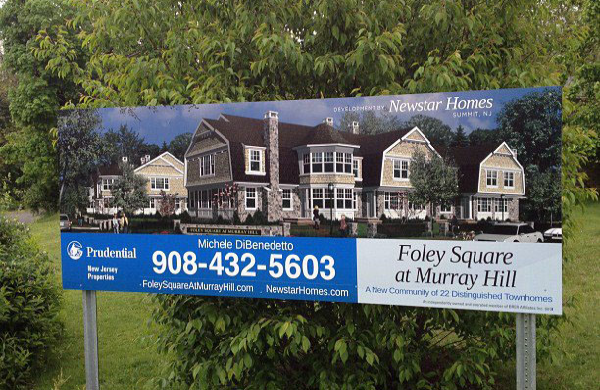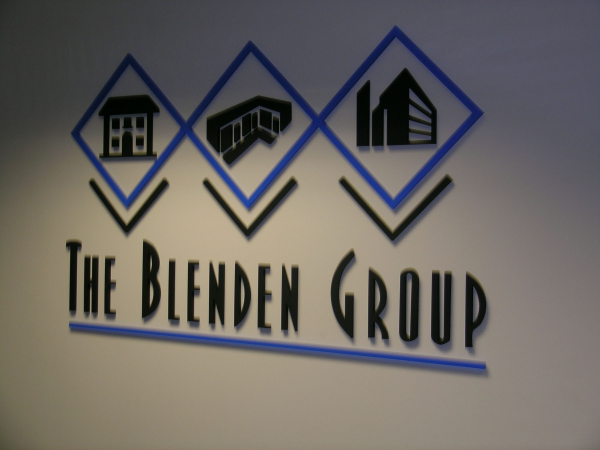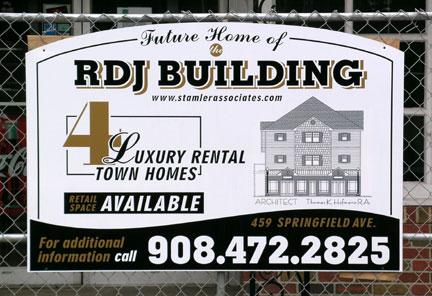Brain researchers have definitive proof that working together in teams and collaborating onprojects actually makes us smarter asa species. The very act of solving problems, coming up with newideas and facing challenges causes our brains to grow. What all this science means is we should seek out ways to partner with others because we are better working together than we are apart.
Our Blog - A look into our world
Vendor vs partner...choose a sign company as a member of your team
Posted by Gary Baron on Thu, Jun 6, 2013 @ 12:44 PM
Topics: property managment signs, facility managers, franchise solutions, wayfinding signage systems
Don't think vendor. Think partner when choosing a sign company.
Posted by Gary Baron on Fri, May 17, 2013 @ 11:58 AM
When it comes to getting the most out of your signage budget, all the steps in our guide are important. But perhaps the number one step you can take to maximize your budget, develop useful signs and build long term brand consistence is to develop a partnership with a reputable sign company.
Too often, businesses look at their vendors as simply suppliers. You order a product. The vendor delivers it. Done. This may work for your office supplies, but leaves something to be desired for your signage. A partnership means you work together to achieve success.
Let's explore how to get the most out of this valuable partnership. You can also see the ebook for more information or to start building a partnership with The Sign Center.
Trend Setters and Thought Leaders
A thought leaders is someone you turn to for the latest ideas in an industry. It's someone who keeps up with the latest news and ideas in a specific industry. The sign company you choose should be a thought leader in the sign industry.
As you choose a partner, ask about the industry.
Topics: property managment signs, directory signs, wayfinding systems, facility managers
How to make your signage more useful and intuitive
Posted by Gary Baron on Fri, Apr 5, 2013 @ 02:39 PM
Have you ever seen a sign that needs a sign to explain it to a building's visitors? What about signs that serve no purpose or use to customers? Those signs aren't getting the job done for your facility if no one can understand what the sign indicates or knows why the sign is there in the first place. These signs also waste money in your sign budget.
All signs in a building or facility should be both useful and intuitive for customers, clients and visitors. If a sign doesn't achieve that basic mission, then don't waste your money on the sign. To make signs useful and intuitive, there are four key indicators to help you achieve this goal.
1. Know Who Will See the Sign
Different audiences call for a different approach to signage. The signs customers and clients need to see vary greatly from those employees need to see. Carefully considering the sign's audience will help you understand what information the sign needs in order to be useful and intuitive to the viewer. This is also a good lens to view current signage in your facility to see if it needs updating.
If you are unsure who sees what signs in your building, spend some time touring the facility. Spend time in different areas observing who visits that area, what signs already exist and how people react to and interpret signage. This "field data" can yield a lot of information to make signs more useful and intuitive for the people who see the sign regularly.
2. Make Signs Recognizable
Or in other words, make the sign visible. Intuitive and useful signs won't work if people can't see them. As you consider color, size and other sign attributes, keep in mind where the sign will eventually go in a building. Don't choose colors that will blend into the surrounding wall or sizes that are too small for a space.
Once you have placed signs in your facility, ensure they don't get blocked by plants, doors, file cabinets or other obstructions. Signs no one can see are basically signs that aren't even there.
3. Use Common Symbols
Creativity is great in some areas of business like marketing and advertising. Signage, though, is one place where you want to stick with what works. Intuitive and useful signs rely on common symbols and icons that customers, clients and visitors can easily recognize and interpret. These include common symbols for restrooms, stairs, disabled access, emergency exits and other commonly visited sites in and around facilities.
4. Vary Signs for Audience
This "must" for useful and intuitive signs takes into account the different audiences who will visit your facility over the course of a business day. This includes:
Topics: architectural signage, property managment signs, wayfinding systems
How to get long-term brand consistency in your signage
Posted by Gary Baron on Tue, Apr 2, 2013 @ 09:24 AM
Executing your brand strategy with excellence requires long-term consistency. Everything your company does should fit into your brand guidelines, even your signage. This is easier said than done, however, as companies run into several roadblocks in their efforts to maintain long-term brand consistency. Maintaining cohesive signage, though, is key to getting the most out of your signage budget.
In this step, we'll explore the common problems companies encounter in sticking to their brand guidelines and how to overcome those hurdles.
Common Signage Hurdles
When it comes to executing your brand in your signage, companies encounter many of the same problems with maintaining consistency: outside influencers, unavoidable situations, and a lack of fidelity to guidelines.
You have many outside influencers who want to have a say in your signage. These include facility managers who want to have their stamp on a building, vendors who think they know best and employees who act independently.
Unavoidable situations also crop up regularly. Signs get damaged from weather or vandalism. A new city or county ordinance might require specific signage immediately. When these situations arise, urgency too often trumps brand guidelines. All of a sudden, fidelity to your branding strategy goes out the window.
Putting Your Brand First
Despite these common hurdles, you can achieve long-term brand consistency in your signage by recognizing these problems and creating plans to address them before they happen.
Start by identifying three key details for your signage:
- Brand color — Pick limited and specific colors your signs can include.
- Brand logos — Identify what versions of your brand's logos will go on signs.
- And measurements — Determine the specific size of an array of signage so replacement signs and new signs measure the same.
After you have identified these key details, you need to communicate them to all the stakeholders — your sign vendor, employees and others like building managers. Knowledge is power after all and many lapses in brand guidelines occur because people weren't aware of the guidelines in the first place.
You should also keep the circle of people who can make final decisions on signage small. When fewer people have the authority to order new and replacement signs, the likelihood of errors will decrease.
Topics: property managment signs, branding, hospital signage, wayfinding signs, wayfinding signage systems
Building A Complex Starts With A Great Foundation: A Site Sign
Posted by Gary Baron on Wed, May 30, 2012 @ 10:47 AM
Before a building ever goes up or someone lays the first brick for a new complex, there are a thousand pieces of information that need to be shared, communicated and offered. Sometimes, much of that information has to reach people that you can't reach otherwise.
Topics: site signs, property managment signs
Lobby signs, wayfinding, directional signage, branding—these are all tools to identify locations, direct the flow of people, and make a visual statement about your company. Lobby signs do more than merely establish a place name. Psychologically, they endow your brand with both prominence and positioning, creating the perception of a stable company with permanence and reliability. Elements of an effective lobby sign are as varied as their application: Lobby signs can be simple or elaborate, inspired or purely functional, yet still enhance the aesthetics of the building’s interior.
Topics: dimensional sign, architectural signage, property managment signs, directory signs
Monument Signs, Entrance Signs, all you need to know
Posted by Gary Baron on Fri, Mar 23, 2012 @ 03:27 PM
Monument signs come in many different sizes, shapes, and designs. They often reflect the architectural style of the building or shopping center they are associated with. They may advertise multiple businesses, or just one major business. The signs that include multiple names may be bigger that those that include just one name, though the size also depends on the company logos included, how far away the sign is from the building, and how visible it needs to be. Some monument signs are painted, while others have information carved into their surface, and still others include changeable panels. Lighting of some sort is often included as part of monument signage. It may be located in the surrounding landscaping, or built directly into the sign itself. One of the most unique aspects of monument signage is design that allows it to blend in with its location while still being visible to customers. It is made to match the design of its surrounding area so that it appears as part of the scenery instead of sticking out in a garish manner.
Topics: architectural signage, property managment signs, outdoor signage, wayfinding systems, monument signs
Another factor is the specific size of the property signage. Most areas have code that governs the maximum allowable size and also a maximum height. If you don’t already know those specific codes, you need to research the topic. Most residential covenants specify this information, but for commercial property, the zoning ordinances may contain the information, or you might also extract the information through your official county government website. You want the largest sign allowable to maximize visibility. When marketing your property, you certainly don’t want to go to the expense and creative effort, only to receive a warning from the local zoning board demanding the sign’s removal.
Topics: site signs, property managment signs, construction signs













